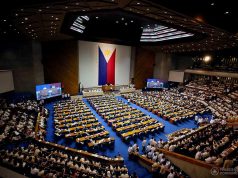NEDA says calamity price controls to be temporary, does not expect hoarding
THE NATIONAL Economic and Development Authority (NEDA) said it does not expect a state of calamity declaration, which will trigger price freezes, to lead to the hoarding of goods and their removal from the market.
NEDA Undersecretary Rosemarie G. Edillon said any caps on prices will be temporary and apply only to the affected regions, under the terms of Republic Act 10121, or the Philippine Disaster Risk Reduction and Management law.
“It’s only very temporary. The idea is to protect the consumers in that particular area,” she added.
Last week, the Trade department ruled out price freezes as a means to arrest inflation, saying that producers would be discouraged from bringing goods to market if their profits erode or if they are forced to sell at a loss.
Crop damage caused by typhoon Ompong (international name: Mangkhut) is expected to put more pressure on food prices because of the damage to key rice-growing areas and the vegetable-growing center of Benguet.
Ms. Edillon said that high prices are expected “very soon” and “immediately” in the affected areas.
“We hope to address the higher prices by resolving logistical issues and by augmenting the supply of goods by tapping growers in Mindanao,” she said.
The National Disaster Risk Reduction and Management Council (NDRRMC) will meet today to decide on a recommendation to the President on whether he should declare a state of calamity in the areas affected by typhoon Ompong.
Socioeconomic Planning Secretary Ernesto M. Pernia, a member of the NDRRMC, said a technical working group (TWG) will meet again today to decide on the calamity recommendation.
Office of Civil Defense (OCD) spokesperson Edgar L. Posadas confirmed the meeting, saying: “NDRRMC through the leadership of OCD will convene a TWG to see if the parameters for declaring such were met. So then we’ll definitely make (a) recommendation… to the President.”
The Department of Finance (DoF) announced on Tuesday that it can tap a $500-million loan facility from the World Bank following a state of calamity declaration, and that it has recommended to the NDRRMC to consider proposing such a declaration.
In a statement yesterday, the DoF said the World Bank funding it expects to tap is known as the second Disaster Risk Management Development Policy Loan With A Catastrophe Deferred Drawdown Option.
It will provide the government immediate liquidity to help fund its disaster relief and reconstruction efforts, and can be immediately accessed 48 hours after a Presidential declaration.
The declaration will likely focus on the Ilocos Region, Cagayan Valley, Central Luzon and the Cordillera Administrative Region.
The loan facility, net of a 0.5% front-end fee, had an available balance of $497.5 million at the end of August, according to the DoF.
A state of calamity has not been declared since the second loan facility was extended by the World Bank in 2015, leaving the funds untapped.
The first loan facility was opened in 2011 following the destruction caused by typhoon Sendong (international name: Washi).
Under the loan terms, the government can tap all the funds at any time within three years.
The loan is payable in 25 years, including a 10-year grace period with an interest rate based on a variable premium over dollar 6-month LIBOR (London Inter-bank Offered Rate). — Elijah Joseph C. Tubayan



